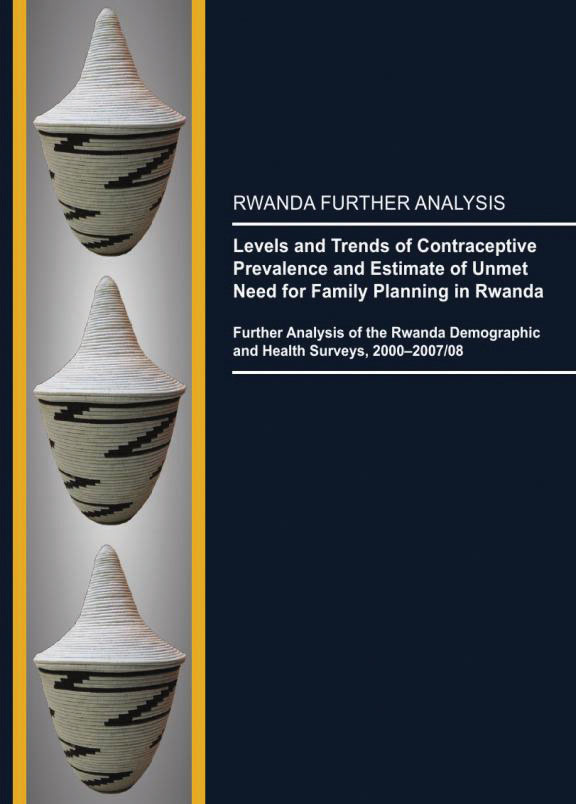- PUBLICATIONS
- JOURNAL ARTICLES
- ACCESS PUBLICATIONS
Publications Summary
- Document Type
- Further Analysis
- Publication Topic(s)
- Family Planning
- Country(s)
- Rwanda
- Survey
- Rwanda Interim DHS, 2007-08
- Language
- English
- Recommended Citation
- Ayad, Mohamed and Rathavuth Hong. 2009. Levels and Trends in Contraceptive Prevalence and Estimate of Unmet Need for Family Planning in Rwanda: Further Analysis of the Rwanda Demographic and Health Surveys, 2000-2007/8. DHS Further Analysis Reports No. 67. Calverton, Maryland, USA: ICF Macro.
- Download Citation
- RIS format / Text format / Endnote format
- Publication Date
- September 2009
- Publication ID
- FA67
Download
 Levels and Trends of Contraceptive Prevalence and Estimate of Unmet Need for Family Planning in Rwanda (PDF, 903K)
Levels and Trends of Contraceptive Prevalence and Estimate of Unmet Need for Family Planning in Rwanda (PDF, 903K)
